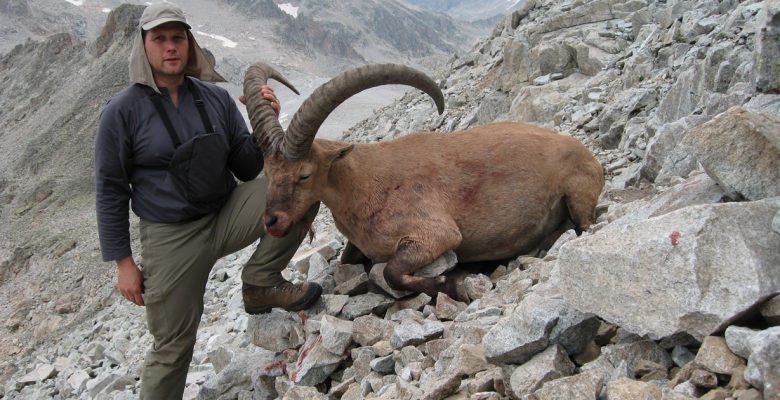Caucasian Tur Hunting in Russia, Abkhazia and Azerbaijan
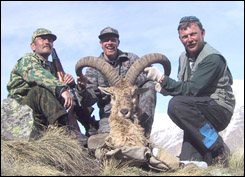
Many serious mountain hunters consider Caucasian tur as a must to have a trophy. Sergei Shushunov and the Russian Hunting Agency will organize a hunt for this unique animal. Caucasian tur is found only on the ranges of Caucasus mountains, at altitudes between 2000 and 4,000 meters (6,600-13,000 ft.). Its distinct look resembles both a goat and a sheep and is classified as a goat antelope. Tur is a nocturnal animal, eating in the open at night and sheltering during the day, usually in inaccessible places. Females live in herds of around ten individuals, while males are typically solitary.
There are three subspecies of Caucasian tur.
The West Caucasian (Kuban) tur is found in Russia and Abkhazia. This tur has a chestnut coat with a yellow underbelly and darker legs. The horns are scimitar-shaped and heavily ridged. Hunting is extremely difficult due to high elevations and very precipitous terrain, which precludes using horses for most of the hunt.
The East Caucasian (Dagestan) Tur is found in the Russian republics of Dagestan and Northern Ossetia as well as in Azerbaijan. It has a somewhat smaller body, but otherwise similar to Kuban tur, usually with larger, lyre-shaped horns. Dagestan tur hunting is usually somewhat easier than hunting Western tur.
Mixed (Severtsov) tur is a true naturally-occurring cross between the Dagestan (Eastern) and Kuban (Western) tur. The horns may look almost exactly like Eastern or Western tur, or anywhere in between. Hunting for this tur subspecies, found only in Russia, is as hard as hunting for Western tur.
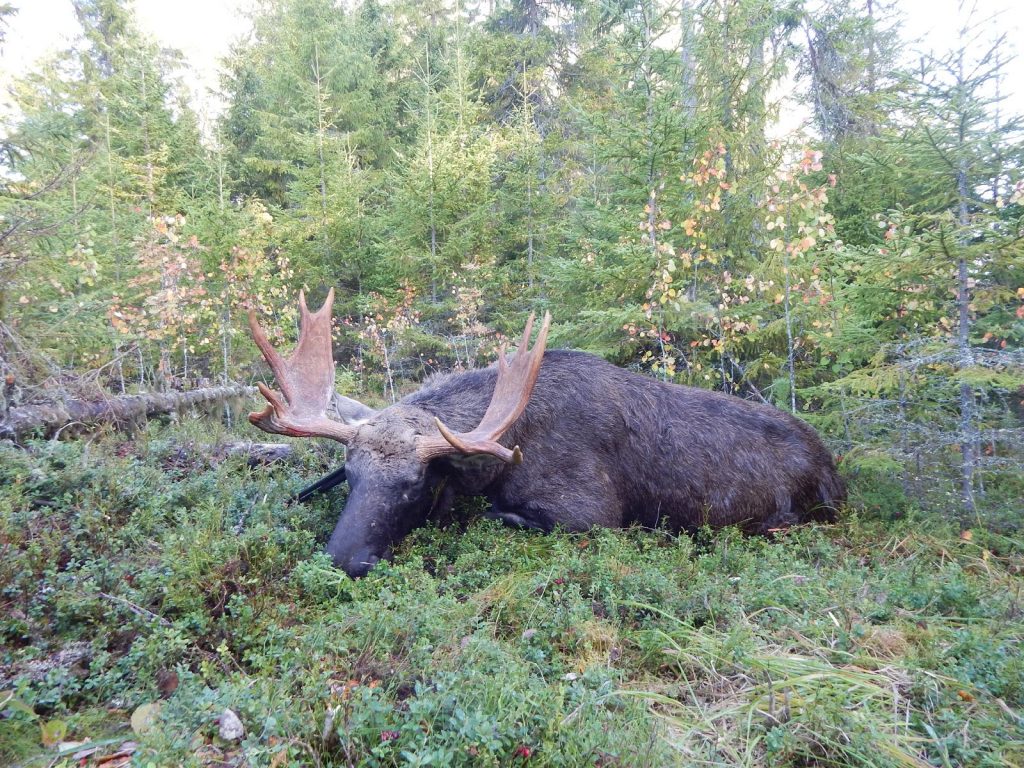
Location: St. Petersburg, Karelia, 200-700 miles E or NE from St. Petersburg
Season dates: September 5-September 30 Hunting method: Bugling Accommodations: Fully equipped hunting lodge or remote log cabin Price: $5500 group of 2; $6000 solo Additional day of hunting: $400 Additional trophies: brown bear $3500, wild boar $200-1000
Included in the price:
Reception and assistance at St. Petersburg airport; Accommodation in the hunting area; Meals and soft drinks during the hunt; Roundtrip ground transportation airport-hunting area and transportation during the hunt; Services of 1 guide per hunter; Services of 1 interpreter in a camp; Field trophy preparation; Gun permit; Invitation letter and voucher; License; Trophy export permit; 1 bull moose.
Not included in the price:
Insurance of any kind; International and domestic travel before and after the hunt; Preparation, shipping, or transporting of trophies from Russia; Cost of sightseeing tours; Ground transportation unrelated to hunting; Gratuities.
Itinerary
Day 1: Arrival in St. Petersburg and transfer to the hunting lodge. Day 2-8: 7 days of hunting Day 9: return to St. Petersburg for a flight home.
Comments:
Russian European moose population does not have as high density as other European countries, like for example, Sweden, but Russia offers by far better trophies. The usual trophy is similar to Canada moose found in Ontario and Quebec. The temperature can range from 0 to +15° C. Hunters should bring waterproof tall boots, gloves, and camo silent clothes. Brown bear can be added during the first half of September.
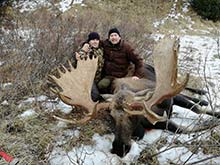
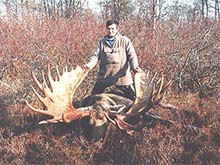
Location: Ust-Kamchatsky district, Kamchatka peninsula
Season dates: September 27 – October 10
Hunting method: Spot and stalk
Accommodations: Remote cabin with an electric generator, satellite phone, hot shower, sauna
Price: $17,500
Additional trophies: brown bear $4000
Included in the price
Reception and assistance in Petropavlovsk airport; Accommodation in the hunting area;
Meals and soft drinks during the hunt; Transportation during the hunt; Services of 1 guide per hunter; Services of 1 interpreter in a camp; Field trophy preparation; Gun permit; Invitation letter and voucher; Hunting license; Trophy export permit;1 bull.
Not included in the price
Insurance of any kind; International and domestic airfare; Hotel in Petropavlovsk before or after the hunt; Conservation, shipping, or transporting trophies from Russia; Cost of sightseeing tours; Gratuities.
Itinerary
Day 1: arrival to Petropavlovsk, 7-hour drive to Maiskoe, overnight in Maiskoe.
Day 2: 55-minute helicopter flight to hunting camp
Day 3-12: 10 days of hunting
Day 13: return to Petropavlovsk, overnight in Petropavlovsk
Day 14: flight home
Details
Kamchatka moose (Alces alces buturlini) is one of the largest moose subspecies in the world. Kamchatka moose is genetically identical to Chukotka moose. The population of Kamchatka moose is close to 6000 and it is getting larger. The camp is located south of 15,000 ft. Kamen volcano, and north of a large federal wildlife preserve. Hunt is conducted by spot and stock only. Later in the fall season, with the foliage down, spotting moose above the brush becomes easier. Hunters should expect to spend 2-3 days at a time away from the base camp, staying overnight in hunting tents or shacks. Rains are common, sometimes keeping hunters inside of cabins for a few days.
Request Information
All three tur subspecies can be hunted n Russia on one trip if time allows. Caucasian chamois can be added as a secondary trophy only in Russia and Abkhazia because chamois can’t be hunted in Azerbaijan. Shooting over a distance of 400-500 meters (440-550 yards) is not unsusual. Hunting camps are located at an altitude of up to 2500 meters (8000 ft.) and approximately 4-6 hours traveling from the airport. Transportation to spike camps from base camps is done either on horseback or on foot. This is one of the most difficult mountain hunts in the world. The hunt takes place at an altitude of about 2800 to 4000 meters (9500-1300 ft.) and is physically demanding due to very steep, rocky, and precipitous slopes. Two areas: Krasnodar region of Russia and Abkhazia, a newly independent tiny country sandwiched between Russia and Georgia, offer an opportunity to hunt Western tur at elevations several thousand feet lower than in other parts of Russia.
For more information, please visit www.CaucasianTurHunt.com.
Please contact us for more information.
Sergei Shushunov

